Filter bag
-
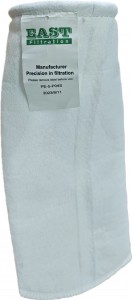
Water Filter Bags: A Key Line of Defense in Water Treatment
In today’s era where requirements for water quality are increasingly stringent, water filter bags, as core components in the water treatment process, play a pivotal role. Whether it is ensuring the smooth progress of industrial production or safeguarding the water safety in our daily lives, water filter bags silently undertake the task of filtering impurities and purifying water quality.The working principle of water filter bags is based on a precise physical filtration mechanism. When water flows through the filter bag, its unique fiber structure, like a fine mesh, can effectively intercept various impurities in the water, including suspended particles, colloidal substances, microorganisms, and other pollutants. These impurities are trapped inside the filter bag, while the purified water passes through smoothly, thus achieving efficient separation of water and impurities.Its filtration precision can be accurately adjusted according to different application needs, ranging from a few microns to hundreds of microns, which can meet the filtration requirements of various complex water qualities. For example, in the electronics industry, for the preparation of ultrapure water, filter bags need to have extremely high filtration precision to remove extremely small particle impurities in the water and ensure the production quality of electronic products; in some industrial fields with relatively low water quality requirements, such as textile printing and dyeing wastewater treatment, filter bags can quickly filter out large particle suspended solids in the water through larger pores, laying the foundation for subsequent advanced treatment.There is a wide variety of material choices for water filter bags, and each material has unique performance characteristics to adapt to different working environments and filtration needs. Common materials include polypropylene (PP), polyester (PE), nylon, and stainless steel. PP material filter bags have excellent acid and alkali resistance, strong chemical stability, can work stably in various chemical corrosion environments, and have relatively low cost, so they are widely used in chemical, pharmaceutical and other industries; PE material filter bags are known for their excellent wear resistance and good high-temperature resistance, can be used for a long time under high-temperature and high-wear working conditions, and are often used in petroleum, metallurgy and other fields; nylon material filter bags have high filtration precision and significant interception effect on tiny particles, and are often used in food and beverage, biopharmaceutical and other industries with extremely strict water quality requirements; stainless steel filter bags have comprehensive advantages such as high strength, corrosion resistance, and high-temperature resistance, and are suitable for some extremely harsh working environments, such as the filtration of drainage from high-temperature and high-pressure chemical reaction kettles.In practical applications, water filter bags show many incomparable advantages. Firstly, their filtration efficiency is extremely high, which can quickly and effectively remove impurities in water, greatly shortening the time of water treatment and improving production efficiency. Secondly, water filter bags have strong dirt-holding capacity, can hold a large number of impurities, reduce the frequency of frequent replacement of filter bags, and lower maintenance costs and labor intensity. Moreover, the installation and replacement of water filter bags are simple and quick, without the need for complex tools and professional skills, even non-professionals can easily complete, which provides convenience for their wide application in various occasions. In addition, water filter bags also have good environmental performance, and their materials are usually recyclable, reducing environmental pollution and conforming to the concept of sustainable development. -
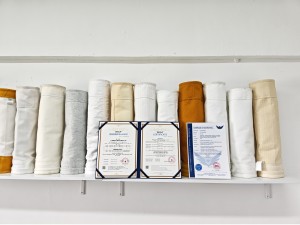
Working Principle of Anti-static Dust Filter Bags
In order to effectively solve the problem of static electricity, anti-static dust filter bags adopt special designs and materials. Their main working principle is to form a conductive network by mixing conductive fibers, such as stainless steel fibers, carbon fibers, or conductive polymer fibers, into the filter material. When static electricity is generated during the dust filtration process of the filter bag, these conductive fibers can quickly conduct away the static charge, preventing the static electricity from accumulating on the surface of the filter bag. At the same time, some anti-static dust filter bags also undergo anti-static treatment on the surface of the filter material, such as using anti-static coatings, to further reduce the surface resistance of the filter bag and enhance its static conductivity. This two-pronged approach enables anti-static dust filter bags to continuously and stably play an anti-static role in complex industrial environments, providing a strong guarantee for the safe operation of dust removal systems.Wide Range of Application IndustriesAnti-static dust filter bags are widely used in many industries.- Chemical Industry: The chemical production process involves a large number of flammable and explosive chemicals and dust, such as organic dust generated in organic synthesis workshops and light oil mist in petrochemical plants. Once these substances encounter electric sparks, they are extremely likely to cause explosions and fires. Anti-static dust filter bags can effectively filter dust and eliminate static electricity hazards in all aspects of chemical production, such as tail gas treatment of reaction kettles and workshop ventilation and dust removal, ensuring the safe and stable operation of chemical production.
- Coal Industry: A large amount of coal dust is generated during coal mining, processing, and transportation. Coal dust is not only flammable but also has a higher explosion risk in relatively closed environments such as underground mines. Anti-static dust filter bags are widely used in the ventilation systems of coal mines and the dust removal equipment of coal preparation plants, etc., which can timely filter coal dust, prevent coal dust explosions caused by static electricity, and protect the lives of coal mine workers and the smooth progress of coal mine production.
- Metal Processing Industry: During the production, processing, and storage of metal powders such as aluminum powder and magnesium powder, the friction between metal powders and equipment, pipelines, etc. is extremely likely to generate static electricity. These metal powders are highly flammable and explosive, and once an explosion occurs, the consequences are unthinkable. Anti-static dust filter bags play a key role in the workshop dust removal systems and dust collection equipment of the metal processing industry, being able to quickly conduct away static electricity and efficiently filter metal dust, building a solid defense line for the safety production of the metal processing industry.
- Grain Processing Industry: A large amount of dust is generated during the storage, transportation, and grinding of grains, such as flour, starch, and grain dust. These dusts have a high explosion risk when mixed with air in a closed environment. Take flour mills as an example. During the operation of equipment such as flour mills and dust collectors, the friction between dust and equipment components is likely to generate static electricity. Anti-static dust filter bags can effectively eliminate static electricity hazards, ensure the safe production of grain processing enterprises, and prevent dust explosion accidents.
Outstanding Performance Advantages- Excellent Safety Performance: The most core advantage of anti-static dust filter bags lies in their excellent anti-static performance, which can effectively reduce the risk of dust explosions and create a safe production environment for enterprises. By conducting away static electricity in a timely manner, it avoids fire and explosion accidents caused by static electricity, protecting the lives of employees and the property safety of enterprises.
- High Filtration Efficiency: In addition to the anti-static function, anti-static dust filter bags also perform well in terms of filtration efficiency. They can efficiently intercept various fine dust particles and also have a good filtering effect on smaller dust particles, ensuring that the discharged gas meets environmental protection standards and reducing dust pollution to the environment.
- Long Service Life: Due to the use of special materials and processes, anti-static dust filter bags have good wear resistance and corrosion resistance. Under normal use, their service life is longer than that of ordinary filter bags, reducing the frequency of filter bag replacement, lowering the maintenance costs and downtime of enterprises, and improving production efficiency.
- Strong Adaptability: Anti-static dust filter bags can adapt to various complex industrial environments. Whether it is a high-temperature, high-humidity environment or an environment containing corrosive gases, they can operate stably and maintain good anti-static and filtering performance. For example, in the high-temperature tail gas treatment of reaction kettles in some chemical enterprises, anti-static dust filter bags can effectively filter dust and eliminate static electricity in a high-temperature environment.
As an important device in the field of industrial dust removal, anti-static dust filter bags are of great significance for ensuring production safety and reducing environmental pollution. With the continuous development of industrial technology and the increasing requirements for environmental protection, the application prospects of anti-static dust filter bags will be even broader. Enterprises should fully recognize the importance of anti-static dust filter bags, and reasonably select and use anti-static dust filter bags according to their own production processes and dust characteristics, laying a solid foundation for the sustainable development of enterprises. -
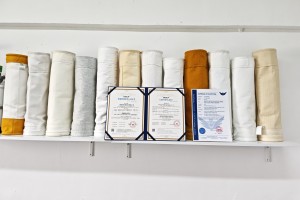
Anti-static Dust Filter Bags: A Safety Barrier for Industrial Dust Removal
During the industrial production process, dust pollution is a problem that cannot be ignored. It not only causes serious damage to the environment but may also endanger the health of workers. More seriously, in some specific industries, such as chemical engineering, coal mining, and metal processing, if dust mixes with air to a certain concentration and encounters a fire source or electrostatic discharge, it is extremely likely to trigger an explosion accident, causing irreparable losses. Therefore, efficient dust removal equipment and technologies are crucial for industrial safety production. As a key dust removal component, anti-static dust filter bags play an irreplaceable role in preventing dust explosions and ensuring production safety.
Hazards Caused by Static ElectricityIn industrial dust removal systems, factors such as the friction between dust and filter bags and the high-speed flow of air can easily generate static electricity in the filter bags. For ordinary filter bags, once static electricity is generated, it is difficult to dissipate in a timely manner and will gradually accumulate on the surface of the filter bags. When the static electricity accumulates to a certain extent, electrostatic discharge may occur, generating electric sparks. In an environment with flammable and explosive dust, these electric sparks are like a bomb that may explode at any time, highly likely to trigger a dust explosion, bringing huge casualties and property losses to enterprises. For example, in flour mills, flour dust particles are small and flammable, and a large amount of dust is generated during the production process, such as in the grinding and conveying processes. If the filter bags in the dust removal system do not have anti-static functions, dust explosion accidents caused by static electricity may occur at any time. According to relevant statistical data, in some past dust explosion accident cases, the proportion of accidents caused by static electricity is quite high, which fully highlights the importance of anti-static dust filter bags in industrial production.Working Principle of Anti-static Dust Filter BagsIn order to effectively solve the problem of static electricity, anti-static dust filter bags adopt special designs and materials. Their main working principle is to form a conductive network by mixing conductive fibers, such as stainless steel fibers, carbon fibers, or conductive polymer fibers, into the filter material. When static electricity is generated during the dust filtration process of the filter bag, these conductive fibers can quickly conduct away the static charge, preventing the static electricity from accumulating on the surface of the filter bag. At the same time, some anti-static dust filter bags also undergo anti-static treatment on the surface of the filter material, such as using anti-static coatings, to further reduce the surface resistance of the filter bag and enhance its static conductivity. This two-pronged approach enables anti-static dust filter bags to continuously and stably play an anti-static role in complex industrial environments, providing a strong guarantee for the safe operation of dust removal systems. -
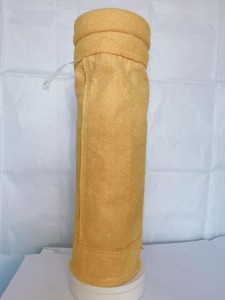
P84 Dust Filter Bag: The “Precision Guardian” for High – end and Complex Dust Removal
In high – end and complex industrial dust removal scenarios, the P84 (polyimide) dust filter bag, with its excellent high – temperature resistance and efficient filtration performance, becomes a “precision guardian” for accurately collecting fine dust and coping with harsh environments.1. Unique Material Attributes
P84 fiber is a polyimide fiber with an irregular cross – section. It has a high melting point, with a long – term continuous service temperature reaching 260°C, and can momentarily withstand up to 300°C. It has significant advantages in flue gas dust removal in high – temperature industries such as hot blast stoves in steel mills and glass kilns.It has excellent chemical stability, showing good tolerance to various strong acids, strong alkalis, and organic solvents. Even in complex chemical environments (such as dust removal of multi – component waste gas in the chemical industry), it can maintain the stable structure of fibers and is not easily damaged by erosion.2. Filtration and Collection Efficiency
Due to the irregular cross – section of the fiber, the P84 filter bag has a large specific surface area and strong dust interception ability. For PM2.5 and finer dust, it can efficiently collect them through the complex pores between fibers. In industries with extremely high requirements for exhaust gas cleanliness such as electronics and pharmaceuticals, it can ensure extremely low particulate matter concentration in the exhaust gas, meeting strict environmental protection and production standards.In terms of dust cleaning, although P84 fiber is relatively brittle, by reasonably designing the filter bag structure (such as optimizing the needling density and selecting a suitable base cloth) and cooperating with dust cleaning methods such as pulse jet, it can ensure the dust cleaning effect while reducing fiber damage, maintaining the long – term efficient operation of the filter bag.3. Application Scenarios and Value Embodiment
It is widely used in precision dust removal in high – end manufacturing, chemical, metallurgical and other industries. For example, in the waste gas treatment of electronic chip manufacturing workshops, P84 filter bags collect fine dust to avoid affecting chip quality -
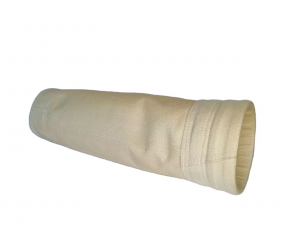
PPS Dust Filter Bag: The “Challenger” in High – Temperature and Harsh Working Conditions
When industrial dust removal faces harsh working conditions such as high temperature and high corrosion, the PPS (polyphenylene sulfide) dust filter bag, with its unique performance, becomes a key solution, safeguarding clean production in complex environments.1. Hardcore Material Performance
The melting point of PPS fiber is about 285°C, with a continuous service temperature reaching 190°C, and it can momentarily withstand 220°C. It can calmly cope with high – temperature flue gas in industries such as coking, waste incineration, and thermal power generation.Its chemical corrosion resistance is excellent, showing strong tolerance to acids, alkalis, organic solvents, etc. Especially in environments with sulfur – containing flue gas (such as flue gas in coal – fired power plants and coking plants) and chlorine – containing waste gas (in waste incineration plants), it is not prone to fiber degradation and embrittlement, ensuring the stable structure and filtration performance of the filter bag.2. Filtration Advantages and Challenge Response
The PPS filter bag itself has a certain flame retardancy. In working conditions with open flames or high – temperature sparks (such as dust removal in waste incinerators), it can reduce the risk of fire and improve system safety.For high – humidity and high – viscosity dust, the combination of the smooth surface and chemical stability of PPS can reduce dust adhesion. For example, in dust removal of flue gas after wet desulfurization, it can effectively collect fine dust, and the dust cleaning is relatively smooth, maintaining a low operating resistance and ensuring dust removal efficiency. However, PPS will slowly undergo oxidative aging in a long – term high – temperature and oxygen – containing environment. Measures such as optimizing the oxygen content in flue gas and selecting PPS fibers with anti – oxidation treatment need to be taken to alleviate this.3. Typical Applications and Values
In waste – to – energy power plants, PPS filter bags are used to treat complex flue gas generated by incineration, withstanding high temperature, corrosion, and dust impact, ensuring the compliance emission of exhaust gas; in the coke oven flue gas treatment of coking plants, they collect coke powder, sulfide and other pollutants, helping environmental protection and production coordination. After a coking plant adopted PPS filter bags, the particulate matter emission concentration in flue gas decreased from exceeding the standard to below 10mg/m³, and the service life of the filter bags exceeded 2 years. It not only solved the environmental protection problems but also reduced the equipment operation and maintenance costs, highlighting its irreplaceability in harsh working conditions. -
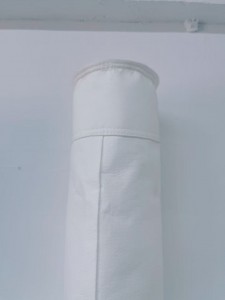
Polyester Dust Filter Bag: The “Basic Backbone” of Industrial Dust Removal
In the field of industrial dust removal, polyester dust filter bags are widely used basic products. Thanks to numerous practical features, they become the first choice for many conventional working conditions.1. Material Properties and Advantages
Polyester, scientifically known as polyester fiber, boasts good chemical stability. It has a relatively moderate temperature resistance, with a normal continuous service temperature around 130°C, and can momentarily withstand 150°C. This makes it suitable for conventional temperature environments in most industrial productions, such as dust control in general building materials and mechanical processing industries.Its wear resistance is outstanding. In working conditions where dust frequently scours and filter bags continuously rub against cages, it guarantees a service life. Moreover, polyester fiber has decent chemical corrosion resistance, tolerating common weak acid – base gases (like acidic and alkaline pollutants in ordinary industrial waste gas) to a certain extent, and is not prone to rapid damage due to chemical erosion.2. Filtration and Dust – Cleaning Performance
The fiber structure of polyester dust filter bags is reasonable, with evenly distributed pores, enabling efficient dust interception. For fine dust particles, it can achieve good collection through a combination of surface filtration and deep – layer filtration, ensuring exhaust gas meets standards.During dust cleaning, whether it is mechanical vibration dust cleaning, pulse jet dust cleaning, or reverse air dust cleaning, the polyester material shows good adaptability. It has excellent elastic recovery ability; after dust cleaning, the filter bag can quickly return to its initial filtration state, maintaining stable filtration resistance and ensuring the long – term efficient operation of the dust removal system.3. Applicable Scenarios and Cases
It is widely used in raw material crushing and conveying links in cement plants, steel mills, as well as dust collection in furniture factories, grain processing plants, etc. Take a cement plant as an example. By using polyester filter bags in the raw material mill system, it effectively collects raw material powder, the system operates stably, and the service life of the filter bags reaches 1 – 2 years. This ensures compliance with production environment and emission regulations, and the cost control is also relatively ideal, demonstrating the reliable value of polyester bags in conventional industrial dust removal. -
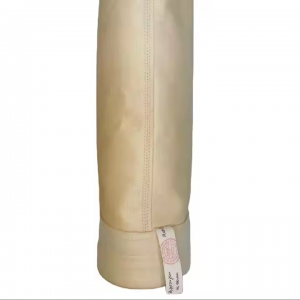
Application Fields of PPS Dust Filter Bags
Application Fields of PPS Dust Filter BagsDue to the excellent performance characteristics of PPS dust filter bags, they are widely used in many industries, playing a crucial role.Power Industry
- Coal-Fired Power Plants: The flue gas generated during coal combustion usually has a temperature range of 140 – 180°C and contains a large amount of acidic gases such as SO₂ and NOx, as well as dust. PPS dust filter bags can operate stably in such high-temperature and highly corrosive environments, effectively filtering dust and resisting the erosion of acidic gases. According to statistics, after a large coal-fired power plant adopted PPS filter bags, the dust emission concentration decreased from 50mg/m³ to below 10mg/m³, significantly improving environmental benefits, ensuring that the flue gas meets the emission standards, and meeting the increasingly stringent environmental protection requirements.
- Waste Incineration Power Generation: The flue gas generated by waste incineration has a complex composition, containing not only highly corrosive gases such as HCl and SO₂ but also pollutants like dioxins and heavy metals, with a large temperature fluctuation range (120 – 200°C). PPS filter bags, with their high-temperature resistance and chemical corrosion resistance, can efficiently intercept dust and pollutants while withstanding frequent temperature changes, ensuring the stable operation and environmental compliance of the waste incineration power generation system, and providing strong support for the sustainable development of the waste incineration power generation industry.
Steel Industry
In the steel production process, such as in blast furnace ironmaking, converter steelmaking, and other processes, a large amount of high-temperature dust and waste gas are generated. These waste gases contain a large number of dust particles and harmful gases such as CO and SO₂. PPS dust filter bags can efficiently remove dust particles in an environment with high temperature, high dust concentration, and corrosive gases, reduce the flue dust emission concentration, and minimize air pollution. At the same time, they protect production equipment, extend its service life, and improve production efficiency.Chemical Smelting Industry
In chemical production processes such as smelting, petrochemicals, and coking, the flue gas often contains high concentrations of acidic gases (such as sulfuric acid mist, hydrochloric acid gas), organic pollutants, and high-temperature dust. For example, in metallurgical processes such as copper and zinc smelting, PPS dust filter bags can effectively filter dust containing heavy metals and resist the corrosion of sulfides in the flue gas. In chemical production, many reaction processes generate corrosive waste gases. The chemical corrosion resistance of PPS filter bags enables them to adapt to these harsh working conditions, operate stably, and achieve efficient dust removal, providing reliable guarantee for environmentally friendly production in the chemical smelting industry.Building Materials and Cement Industry
The flue gas emitted from the kiln head and kiln tail of cement plants has a high temperature (150 – 200°C) and contains alkaline dust and a small amount of acidic gases. PPS filter bags can adapt to high-temperature environments and resist the abrasion of alkaline dust and the corrosion of acidic gases. In the cement production process, stable ventilation and efficient dust removal are crucial for ensuring product quality and production efficiency. PPS dust filter bags can efficiently filter dust, maintain stable ventilation during cement production, improve production efficiency, and meet environmental protection requirements, helping the building materials and cement industry achieve green production.Other Industries
In addition to the above main industries, PPS dust filter bags are also widely used in industries such as glass manufacturing, ceramic production, and biomass power generation. In the glass manufacturing process, the flue gas generated by high-temperature furnaces contains dust and some volatile substances, and PPS filter bags can effectively purify the flue gas. In the ceramic industry, a large amount of flue gas and dust generated during the firing process can also be treated by PPS dust filter bags. In biomass power generation, the flue gas contains many fine particles and some corrosive components. PPS filter bags can effectively remove particles and resist a certain degree of corrosion, ensuring the environmental protection of the biomass power generation process. -
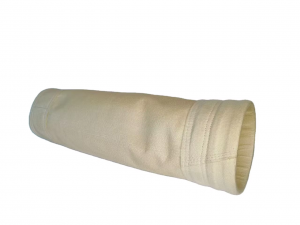
Manufacturing Process of PPS Dust Filter Bags
Fiber Selection and Pretreatment
The production of PPS dust filter bags begins with the selection of high-quality PPS fibers. These fibers usually need to be pretreated before use to remove impurities and adjust the surface properties of the fibers, ensuring better bonding during subsequent processing and improving the overall performance of the filter bags. Pretreatment methods include washing, drying, surface modification, etc.Needle FeltingThe pretreated PPS fibers are carded into a web and then needled by a needling machine. During the needling process, barbed needles repeatedly penetrate the fiber web, causing the fibers to entangle with each other, forming a needle felt with a certain thickness and strength. The needling process enables the fibers to interweave in three-dimensional space, increasing the dirt-holding capacity of the filter bags and improving the filtration accuracy. By controlling the needling density and depth, the structure and performance of the needle felt can be adjusted to meet the requirements of different working conditions.Surface TreatmentTo further enhance the performance of PPS dust filter bags, the needle felt is usually subjected to surface treatment. Common surface treatment methods include singeing, calendering, and film coating. Singeing treatment can remove the fluff on the surface of the filter bags, reducing dust adhesion and making dust removal easier. Calendering treatment rolls the surface of the filter bags under high temperature and pressure, making the surface smoother and improving dust release. Film coating involves covering the surface of the filter bags with a Polytetrafluoroethylene (PTFE) film. This film has a microporous structure, which can further improve the filtration accuracy, achieving efficient filtration of ultra-fine dust particles. Meanwhile, it can also enhance the water and oil resistance of the filter bags. -
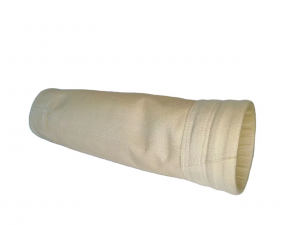
PPS Material Dust Filter Bags: Reliable Guardians of Industrial Environmental Protection
Dust pollution is a non-negligible issue in industrial production. It not only severely damages the environment but also endangers the health of workers and affects the normal operation of production equipment. To effectively address dust pollution, dust removal and filtration equipment have emerged. As the core component of such equipment, the performance of dust filter bags directly determines the effectiveness of dust removal. Among various materials for dust filter bags, Polyphenylene Sulfide (PPS) stands out with its excellent properties, becoming a reliable guardian in the field of industrial environmental protection.
Characteristics of PPS MaterialPPS is a high-performance special engineering plastic with a series of outstanding properties, making it highly suitable for manufacturing dust filter bags.High Temperature ResistancePPS material has a relatively high melting point, usually around 285°C, enabling PPS dust filter bags to operate stably in high-temperature environments. Generally, they can be used continuously at 190°C and withstand a maximum instantaneous temperature of 230°C. This excellent high-temperature resistance makes them perform exceptionally well in handling high-temperature flue gas. For instance, in high-temperature industrial scenarios such as coal-fired boilers, cement rotary kilns, and waste incinerators, PPS filter bags can effectively filter dust without deformation, aging, or damage due to high temperatures, ensuring the long-term stable operation of the dust removal system.Chemical Corrosion ResistancePPS exhibits strong resistance to acids, alkalis, salts, and most organic solvents. In industrial production, many flue gases contain various corrosive gases and chemical substances, such as sulfur dioxide (SO₂), nitrogen oxides (NOx) in the flue gas of coal-fired power plants, and sulfuric acid mist, hydrochloric acid gas in the flue gas of the chemical smelting industry. PPS dust filter bags can maintain their structural and performance stability in such complex and corrosive environments, effectively resisting the erosion of chemical substances. This significantly extends the service life of the filter bags and reduces equipment maintenance costs.Good Mechanical PropertiesPPS fibers have high strength and modulus, with mechanical properties similar to those of polyester fibers. This means that during the use of PPS dust filter bags, they can withstand significant pressure and friction, and are not prone to breakage or damage. In the process of pulse cleaning and other operations, filter bags need to withstand the impact and friction of airflow frequently. The high mechanical strength of PPS material ensures that the filter bags can withstand these tests and maintain good filtration performance.Flame RetardancyPPS is inherently a flame-retardant material, with a limiting oxygen index (LOI) ≥ 34, making it difficult to burn. In some industrial environments with fire risks, such as the waste incineration power generation industry, the flame retardancy of PPS dust filter bags is particularly important. They can effectively prevent the spread of fire in case of a fire, reducing the harm to equipment and personnel and ensuring production safety.High Filtration EfficiencyPPS dust filter bags are manufactured using advanced processes. The fiber structure is dense, and a three-dimensional structure formed by processes such as needling endows them with good porosity and air permeability. This structural feature enables the filter bags to effectively capture and intercept tiny dust particles. The filtration efficiency for dust particles larger than 0.1μm can reach over 99%, meeting strict environmental protection emission standards. They can efficiently remove dust particles from flue gas, significantly reducing the flue dust emission concentration and improving environmental quality. -
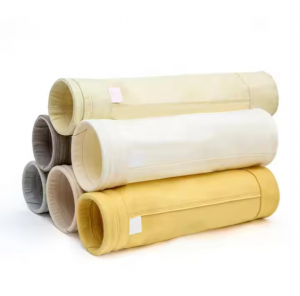
Filter Bags: The Ultimate Filtration Choice for Quality Assurance
In an era where quality and efficiency are of utmost importance, filter bags stand out as the ultimate choice for achieving optimal filtration results. These remarkable filter bags are designed to meet the diverse needs of different industries and applications, ensuring the highest level of product quality and environmental protection.
Filter bags are widely applied across multiple industries. In food processing, they are responsible for removing impurities from ingredients, ensuring the safety and quality of food products. From the extraction of pure fruit juices to the refining of edible oils, filter bags work tirelessly to deliver a perfect end – product. In the industrial sector, filter bags play a critical role in maintaining the integrity of production processes. They filter out contaminants from industrial fluids, chemicals, and paints, ensuring smooth operations and high – quality output. In environmental management, filter bags contribute to the treatment of wastewater, helping to preserve water resources and protect the ecosystem.The variety of materials used in filter bags offers distinct benefits. Nylon filter bags are highly durable and chemically resistant, making them suitable for heavy – duty industrial filtration tasks. Cotton filter bags, being natural and eco – friendly, are ideal for applications where contact with food is involved. Non – woven filter bags are known for their cost – effectiveness and good filtration capabilities, making them a common choice in many daily – use and commercial applications. Filter bags made from other materials, such as polyester, stainless steel, and polytetrafluoroethylene, offer specialized features for specific filtration challenges.The design and construction of filter bags are carefully crafted for superior performance. The high – density mesh design enables efficient capture of fine particles. Innovative manufacturing processes, including hot – melt bonding and precision sewing, ensure reliable performance and prevent any potential leakage. Special features like removable labels and precisely engineered metal rings further enhance the functionality of filter bags, ensuring a secure fit and minimizing the risk of contamination.Filter bags are also user – friendly in terms of maintenance. Their easy – to – clean nature allows for quick restoration of filtration performance. Their long service life reduces the frequency of replacement, saving both time and cost. With a comprehensive range of sizes and specifications, filter bags can be customized to meet the unique requirements of any filtration task. Whether it’s a small – scale home project or a large – scale industrial operation, filter bags are the reliable solution for achieving efficient and high – quality filtration. Trust filter bags to deliver the best results for all your filtration needs. -
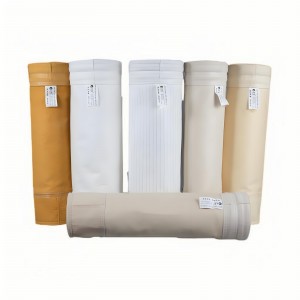
Explore the Superiority of Filter Bags: Your Key to High – Efficiency Filtration
Filter bags are the unsung heroes in the world of filtration, providing efficient and reliable solutions for countless applications. Their significance lies in their ability to deliver high – quality filtration, making them essential in both daily life and industrial operations.
In the food and beverage sector, filter bags are vital for producing top – notch products. When making soy milk, filter bags separate the soybean residue, leaving behind a smooth and nutritious drink. In the production of fruit juices, they remove unwanted pulp, enhancing the clarity and taste. In the industrial field, filter bags are used in a wide array of processes, from the purification of chemicals to the treatment of industrial fluids. They effectively remove particulate matter, ensuring the smooth progress of production and the quality of end – products. In environmental applications, filter bags are crucial for purifying wastewater, playing a key role in environmental protection.The materials of filter bags determine their performance and suitability for different tasks. Nylon filter bags are strong and resistant to chemicals and wear, making them suitable for harsh industrial environments. Cotton filter bags, with their natural and safe properties, are favored in food – processing scenarios. Non – woven filter bags combine affordability with good filtration efficiency, making them popular in many household and commercial applications. Other materials like polyester, stainless steel, and polytetrafluoroethylene offer specialized features for specific filtration requirements.The design of filter bags is optimized for maximum performance. The precisely engineered mesh structure ensures efficient particle removal. Advanced manufacturing methods, like the hot – melt process for non – woven bags and precision sewing techniques, guarantee reliable performance and prevent leakage. Attention to detail, such as the use of removable labels, shows the commitment to maintaining the purity of the filtrate. Filter bags with high – precision metal rings provide a secure fit, reducing the chances of side leakage.Maintenance of filter bags is straightforward, and their long – lasting nature makes them a cost – effective choice. Regular cleaning can restore their filtration ability, and their durability means less frequent replacement. The wide range of sizes and specifications of filter bags allows users to select the most suitable option for their specific needs. Whether you are a home cook, a small business owner, or a large – scale manufacturer, filter bags can meet your filtration requirements. Choose filter bags for a cleaner, purer, and more efficient filtration experience. -
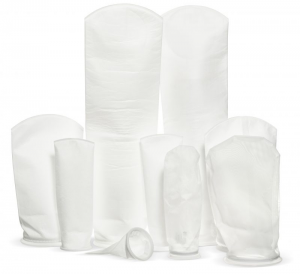
Filter Bags: Unrivaled Filtration Solutions for Diverse Industries
Filter Bags: Unrivaled Filtration Solutions for Diverse IndustriesIn the modern world, where precision and purity are highly valued, filter bags have emerged as indispensable tools across a multitude of industries. These versatile filter bags play a crucial role in ensuring the quality of products and safeguarding the environment by efficiently removing impurities and contaminants.Filter bags find extensive applications in various sectors. In the food industry, filter bags are essential for maintaining the hygiene and taste of food products. Whether it’s the production of beverages like fruit juices and soy milk, or the refining of edible oils, filter bags with their fine – meshed structure can effectively separate residues such as fruit pulp and soybean dregs, guaranteeing a pure and delightful taste. In the industrial realm, filter bags are utilized for the purification of chemical raw materials, filtration of electroplating solutions and paints. High – performance filter bags, such as the BMN series, can provide precise micron – level filtration, meeting the stringent requirements of critical industrial applications. In environmental protection, filter bags contribute significantly to wastewater treatment, helping to separate solid impurities and promoting the recycling of water resources.The diverse range of materials used in filter bags offers unique advantages. Nylon filter bags are renowned for their excellent abrasion resistance and chemical stability. They can withstand high – temperature environments and are ideal for filtering liquids containing particulate impurities, widely used in industrial liquid filtration. Cotton filter bags, made from natural materials, are environmentally friendly and possess superior breathability and moisture absorption, making them perfect for food – related applications. Non – woven filter bags are cost – effective and highly efficient in filtration. They are commonly applied in air filtration, traditional Chinese medicine decoction, and tea – making, effectively filtering out dust and other impurities. Additionally, filter bags made of polyester, stainless steel, and polytetrafluoroethylene also shine in different working conditions, meeting diverse filtration needs.In terms of design and manufacturing, filter bags showcase outstanding craftsmanship. The high – density mesh design enhances filtration efficiency, enabling the capture of even the tiniest particles. Advanced manufacturing techniques, such as hot – melt bonding for non – woven filter bags and high – speed industrial sewing without silicone oil for stitched filter bags, ensure leak – proof performance and prevent contamination of the filtrate. Special attention is also paid to details like removable product labels to avoid any potential pollution. Some filter bags are equipped with stainless – steel collars or galvanized steel rings, which, through argon – arc welding technology, achieve high – precision dimensions, improving the sealing degree and reducing the risk of leakage.Filter bags are not only efficient but also easy to maintain and cost – effective. Most filter bags can be cleaned simply by shaking or rinsing after use. For stubborn stains, appropriate cleaning methods can be adopted according to the material. Their durability means fewer replacements, reducing overall costs. With a wide variety of sizes and specifications available, filter bags can perfectly adapt to different user requirements, from small – scale home use to large – scale industrial production. In conclusion, filter bags are the go – to choice for high – quality filtration, offering reliable solutions for various industries.